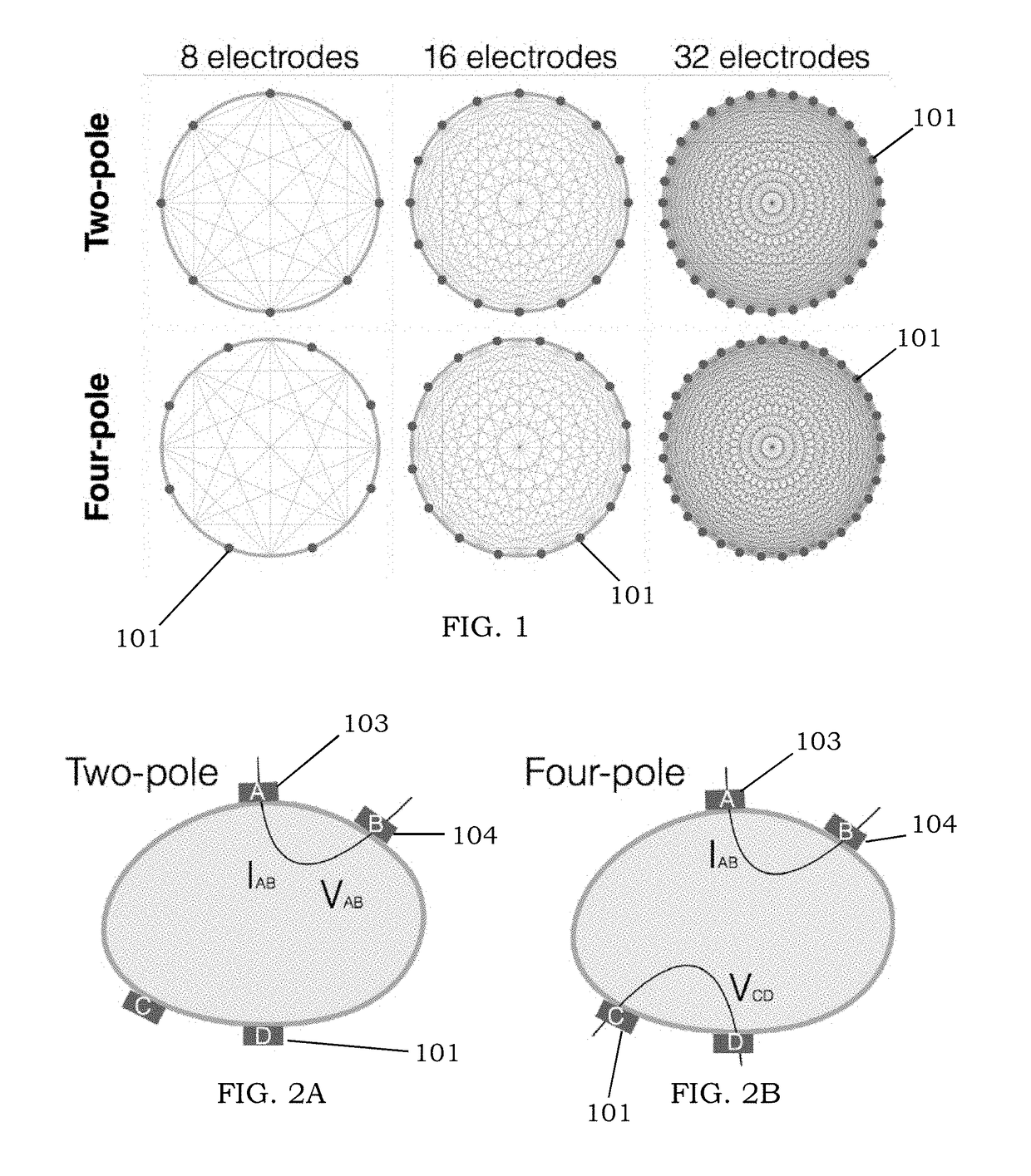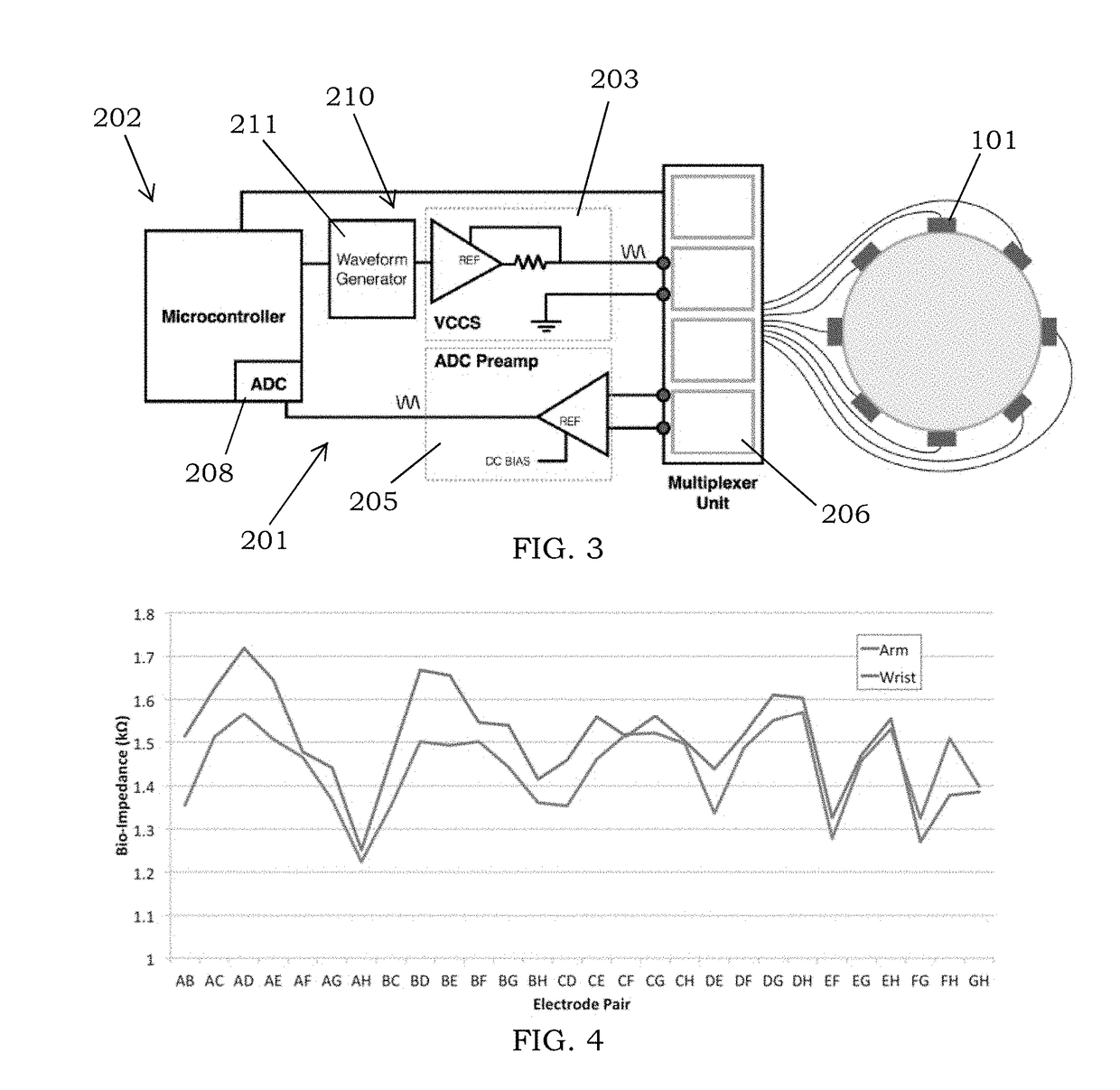System for Wearable, Low-Cost Electrical Impedance Tomography for Non-Invasive Gesture Recognition
a technology of electrical impedance tomography and wearable devices, applied in the field of gesture recognition, can solve the problems of large size and cost of medical eit systems, inability to utilize human-computer interaction techniques, and large computational requirements of many, and achieve the effect of different impedance profiles
- Summary
- Abstract
- Description
- Claims
- Application Information
AI Technical Summary
Benefits of technology
Problems solved by technology
Method used
Image
Examples
Embodiment Construction
[0023]In one embodiment, the system 100 uses Electrical Impedance Tomography (EIT) to recover the inner impedance distribution of an object based on pair-wised measurements from surface electrodes 101 surrounding the object, such as a user's wrist or arm. In one embodiment, the system 100 is worn by the user and the electrodes 101 contact the skin of the user directly or, alternatively, the electrodes 101 contact the user through a thin layer of insulator (i.e. capacitive coupling).
[0024]The number of electrodes 101 is a parameter that can be varied based on the intended application and the accuracy required for the particular application. For example, different embodiments of the present invention utilize 8, 16, and 32 electrodes 101. Intuitively, more electrodes 101 produce a denser mesh of sensed paths, which yields a superior reconstructed image, or cross-sectional representation of the internal structure of the object. For example, FIG. 1 illustrates the number of sensed paths,...
PUM
 Login to View More
Login to View More Abstract
Description
Claims
Application Information
 Login to View More
Login to View More - R&D
- Intellectual Property
- Life Sciences
- Materials
- Tech Scout
- Unparalleled Data Quality
- Higher Quality Content
- 60% Fewer Hallucinations
Browse by: Latest US Patents, China's latest patents, Technical Efficacy Thesaurus, Application Domain, Technology Topic, Popular Technical Reports.
© 2025 PatSnap. All rights reserved.Legal|Privacy policy|Modern Slavery Act Transparency Statement|Sitemap|About US| Contact US: help@patsnap.com



